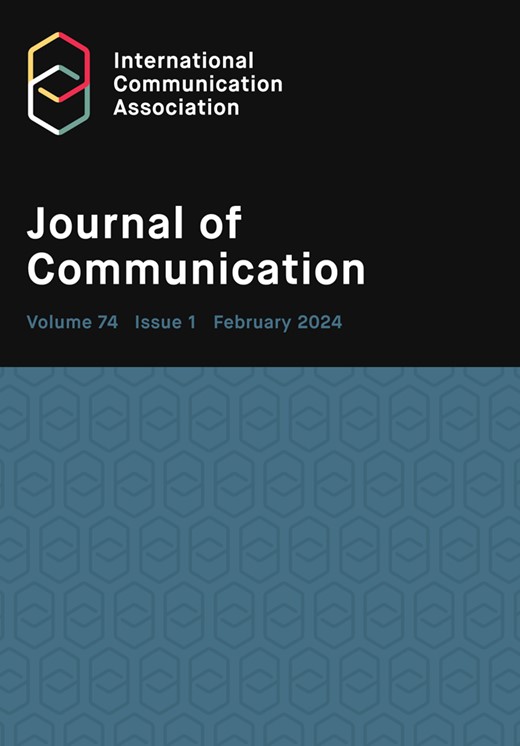Network activated frames: content sharing and perceived polarization in social media
IF 5.5
1区 文学
Q1 COMMUNICATION
引用次数: 3
Abstract
Our article describes how users’ decisions to share content alter the frequencies of the frame elements observed by social media peers. Changes in the frequency of distinct frame elements shape how individuals interpret, classify and define situations and events. We label this process Network Activated Frames (NAFs). We test the mechanisms behind NAF with an original image-based conjoint design that replicates network activation in three surveys. Results show that partisans share more content than nonpartisans and that their preferences differ from those of nonpartisans. Our findings show that a network of peers with cross-cutting ideological preferences may be perceived as a bubble if partisans amplify content they like at higher rates. Beginning with fully randomized probabilities, the output from our experiments is more extreme than the preferences of the median users, as partisans activate more and different frame elements than nonpartisans. We implement the experiments in Argentina, Brazil, and Mexico.网络激活框架:社交媒体中的内容共享与感知极化
我们的文章描述了用户分享内容的决定如何改变社交媒体同行观察到的框架元素的频率。不同框架元素频率的变化塑造了个体如何解释、分类和定义情境和事件。我们将此过程称为网络激活帧(Network Activated Frames, NAFs)。我们使用原始的基于图像的联合设计来测试NAF背后的机制,该设计在三个调查中复制了网络激活。结果显示,无党派人士比无党派人士分享更多的内容,他们的偏好也不同于无党派人士。我们的研究结果表明,如果党派成员以更高的速度放大他们喜欢的内容,那么具有交叉意识形态偏好的同伴网络可能会被视为泡沫。从完全随机概率开始,我们实验的输出比中间用户的偏好更极端,因为党派比非党派激活更多不同的框架元素。我们在阿根廷、巴西和墨西哥实施了这些实验。
本文章由计算机程序翻译,如有差异,请以英文原文为准。
求助全文
约1分钟内获得全文
求助全文
来源期刊

Journal of Communication
COMMUNICATION-
CiteScore
11.60
自引率
5.10%
发文量
41
期刊介绍:
The Journal of Communication, the flagship journal of the International Communication Association, is a vital publication for communication specialists and policymakers alike. Focusing on communication research, practice, policy, and theory, it delivers the latest and most significant findings in communication studies. The journal also includes an extensive book review section and symposia of selected studies on current issues. JoC publishes top-quality scholarship on all aspects of communication, with a particular interest in research that transcends disciplinary and sub-field boundaries.
 求助内容:
求助内容: 应助结果提醒方式:
应助结果提醒方式:


